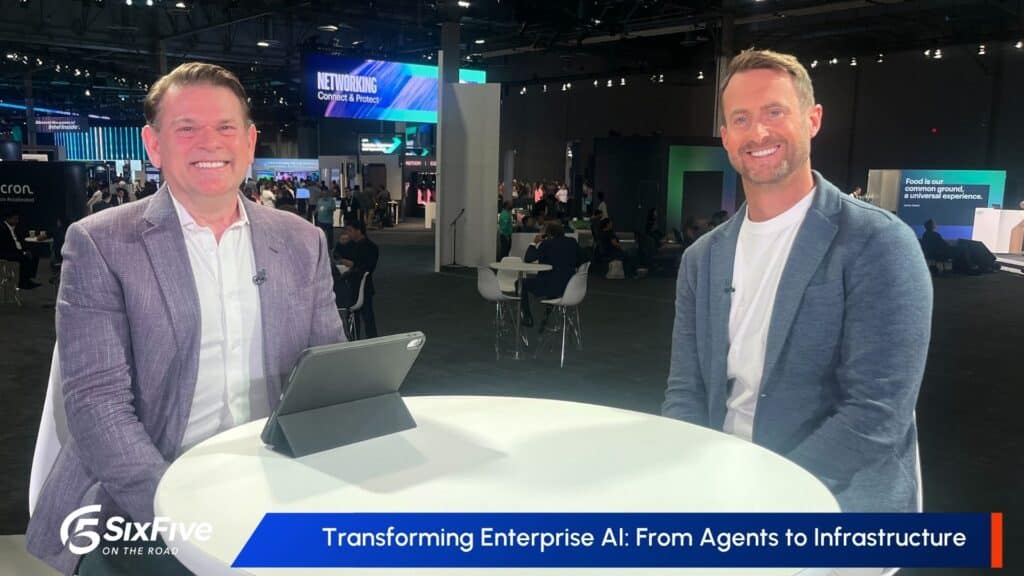The News: CTOs and CMOs may have different priorities, but both share one overall goal, which is to drive business growth. The Adobe Experience platform built on Microsoft Azure unifies the priorities of both the CTO and CMO and it’s impressive. See more about the Adobe Experience Platform here.
Adobe Experience Platform Built on Microsoft Azure Unifies Priorities of the CTO and CMO in Order to Drive Business Growth
Analyst Take: Traditionally, CMOs have been responsible for branding and marketing initiatives while CTOs managed the technology infrastructure. However, with the increasing importance of technology in marketing, these roles are becoming more intertwined — and more complex. That’s why the Adobe Experience platform built on Microsoft Azure is exciting, facilitating the collaboration between CMOs and CTOs in order to create a customer-centric business strategy leveraging data and technology, all with a view toward driving business growth.
The Adobe Experience platform built on Microsoft Azure enables CMOs and CTOs to work collaboratively by understanding their respective priorities. CMOs wish CTOs had a better understanding of the thinking behind marketing requests to the IT staff, the importance of collaborative partnerships, and the pressure to meet modern customers’ growing expectations. Meanwhile, CTOs wish CMOs understood why some marketing requests take longer to fulfill, IT’s contributions to delivering stellar digital marketing customer experiences, and that they are just as focused on people as they are on technology. Whether you’re in marketing or IT, chances are good you know exactly what I mean.
Here’s a look at how Adobe and Microsoft are addressing these challenges:

The Value Proposition of The Adobe Experience Platform
So, how does it work? The Adobe Experience platform built on Microsoft Azure seeks to unify these two different priorities for business growth, helping customers with data modernization and customer experience needs, and meeting the priorities of both.
For CTOS, the Adobe Experience platform provides:
- The ability to migrate legacy on-prem data systems to the cloud
- Modern cloud-scale-managed data stores
- The ability to reduce silos via unified and governed data
For CMOs, the Adobe Experience platform provides:
- A single customer view and actionable segments
- The ability to deliver personalization at scale across segments
- ROI optimization via measurement and AI (cue somersaults from marketers giddy with delight here)
By working with Microsoft Azure on the Adobe Experience platform, the CMO and CTO now have the ability to collaboratively think about their organization’s data estate, with the platform unifying their different priorities — and that’s a massive win.

As someone who has spent decades navigating the challenges of the chasm between marketing and IT, the value proposition of the Adobe Experience Platform built on Microsoft Azure is incredibly compelling. It doesn’t take any effort at all to see the advantages, the most important of which is being able to deliver across the board on serving up better, more personalized customer experiences. The other benefits, like increased revenue, a better competitive advantage in the marketplace, and a fast track to data modernization are all important as well, but when you win on the customer experience front, all the rest is a given. This is exactly what CMOs and their CTO counterparts need.
Disclosure: Futurum Research is a research and advisory firm that engages or has engaged in research, analysis, and advisory services with many technology companies, including those mentioned in this article. The author does not hold any equity positions with any company mentioned in this article.
Analysis and opinions expressed herein are specific to the analyst individually and data and other information that might have been provided for validation, not those of Futurum Research as a whole.
Other insights from Futurum Research:
Adobe Summit 2023: Adobe’s Content Supply Chain Solution is Worth Being Very Excited About
Adobe Announces Generative AI innovations Across Adobe Experience Cloud at Adobe Summit
Adobe Revenue for Q1 2023 Hits Record $4.66B, Up 9% YoY
Image Credit: Adobe
Author Information
Shelly Kramer is a Principal Analyst and Founding Partner at Futurum Research. A serial entrepreneur with a technology centric focus, she has worked alongside some of the world’s largest brands to embrace disruption and spur innovation, understand and address the realities of the connected customer, and help navigate the process of digital transformation. She brings 20 years' experience as a brand strategist to her work at Futurum, and has deep experience helping global companies with marketing challenges, GTM strategies, messaging development, and driving strategy and digital transformation for B2B brands across multiple verticals. Shelly's coverage areas include Collaboration/CX/SaaS, platforms, ESG, and Cybersecurity, as well as topics and trends related to the Future of Work, the transformation of the workplace and how people and technology are driving that transformation. A transplanted New Yorker, she has learned to love life in the Midwest, and has firsthand experience that some of the most innovative minds and most successful companies in the world also happen to live in “flyover country.”



